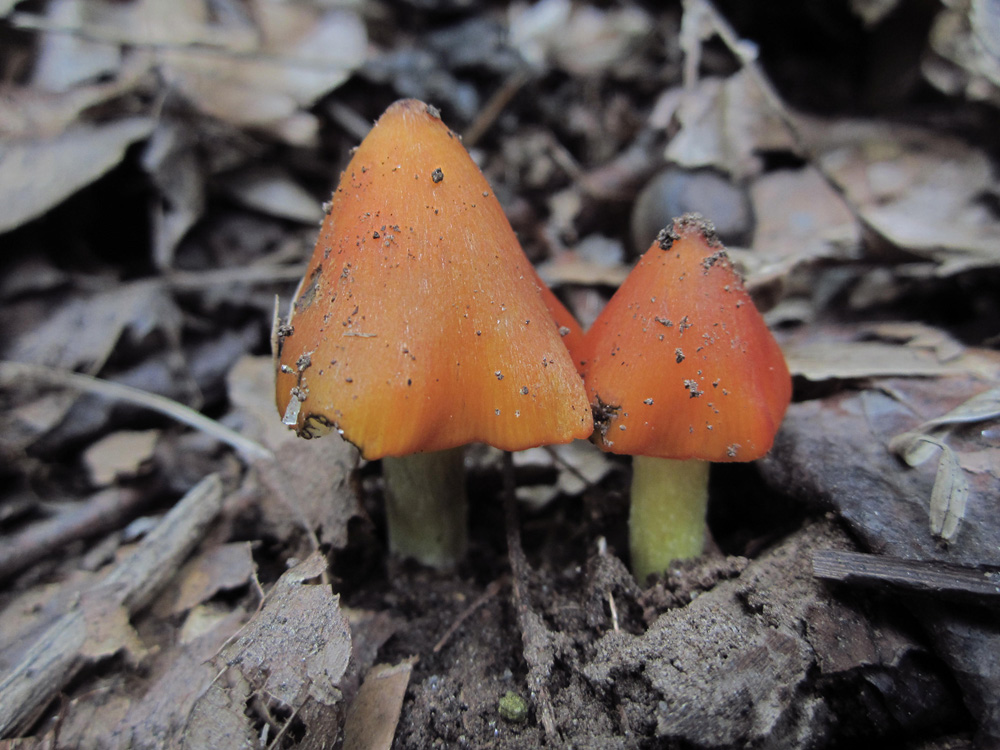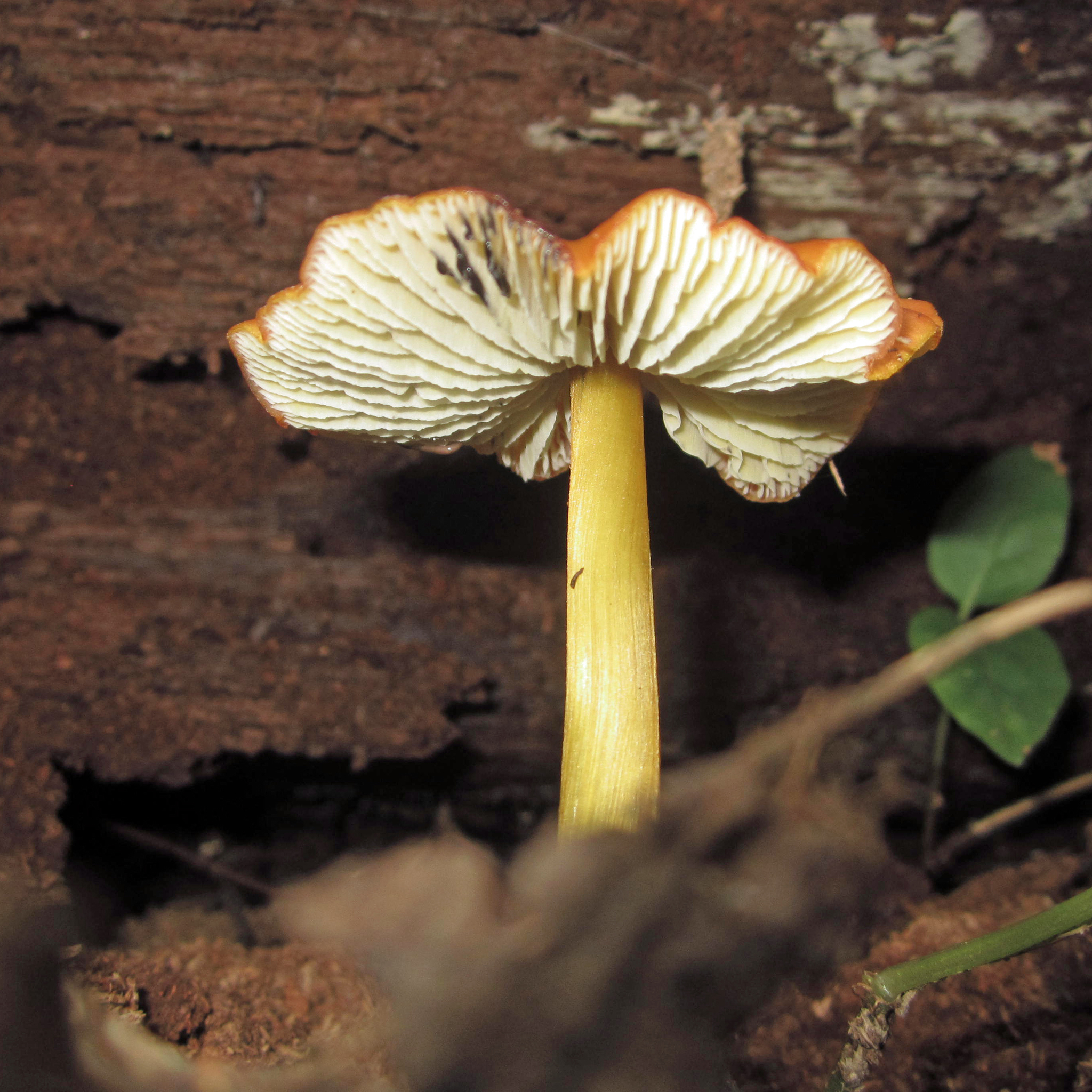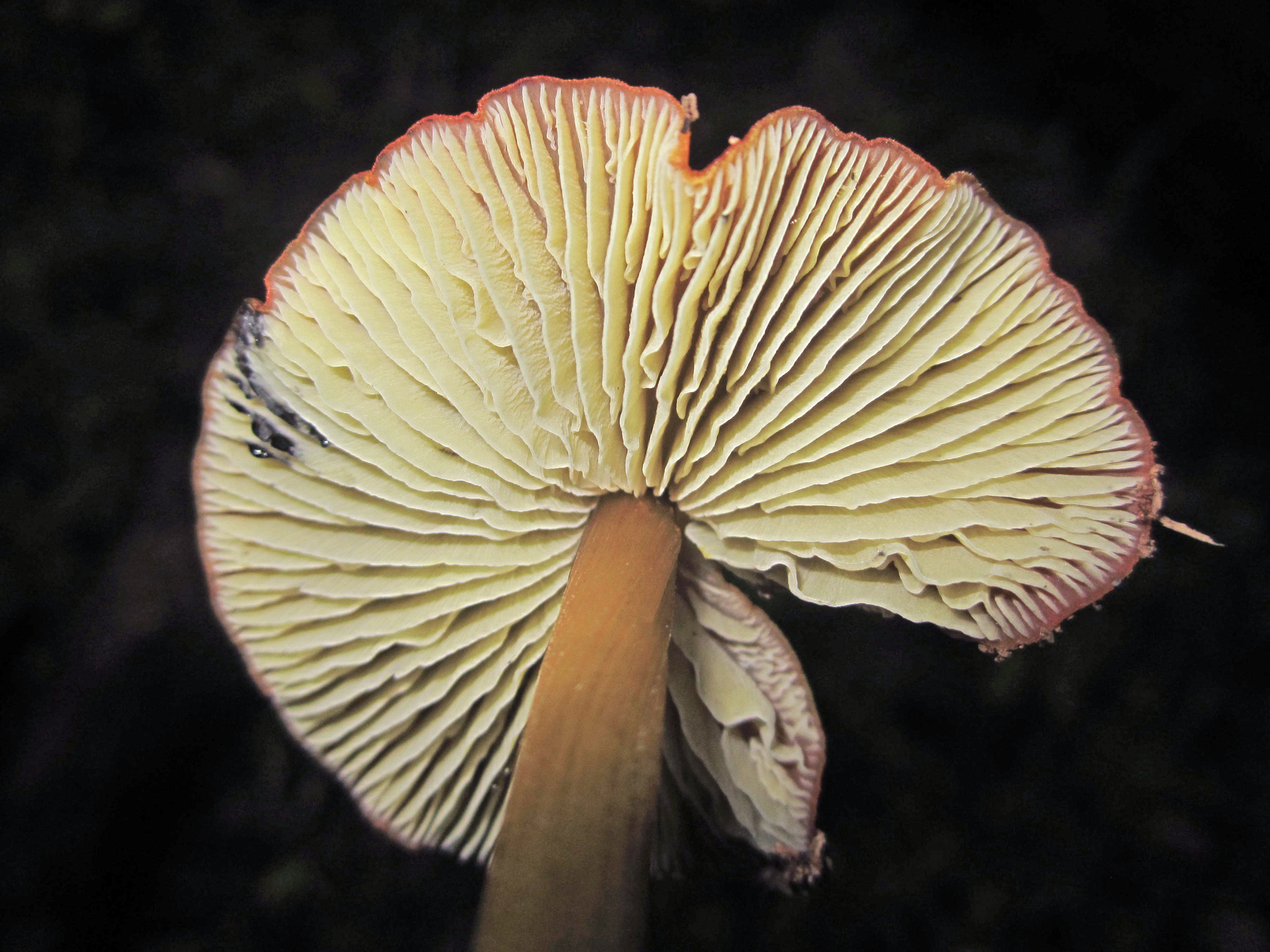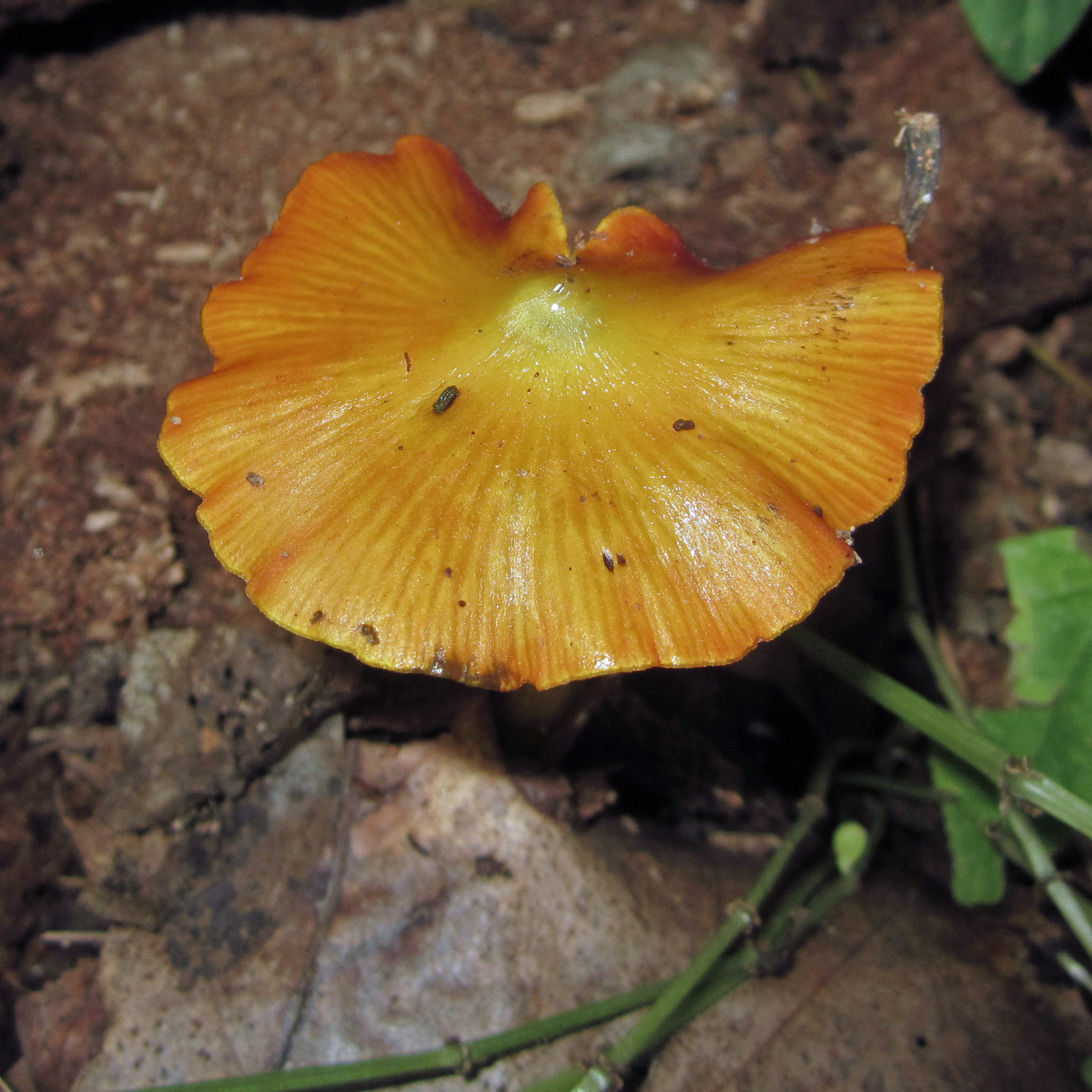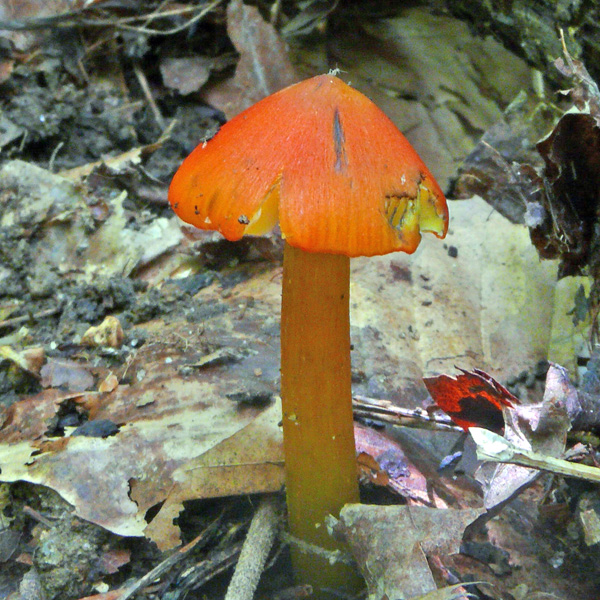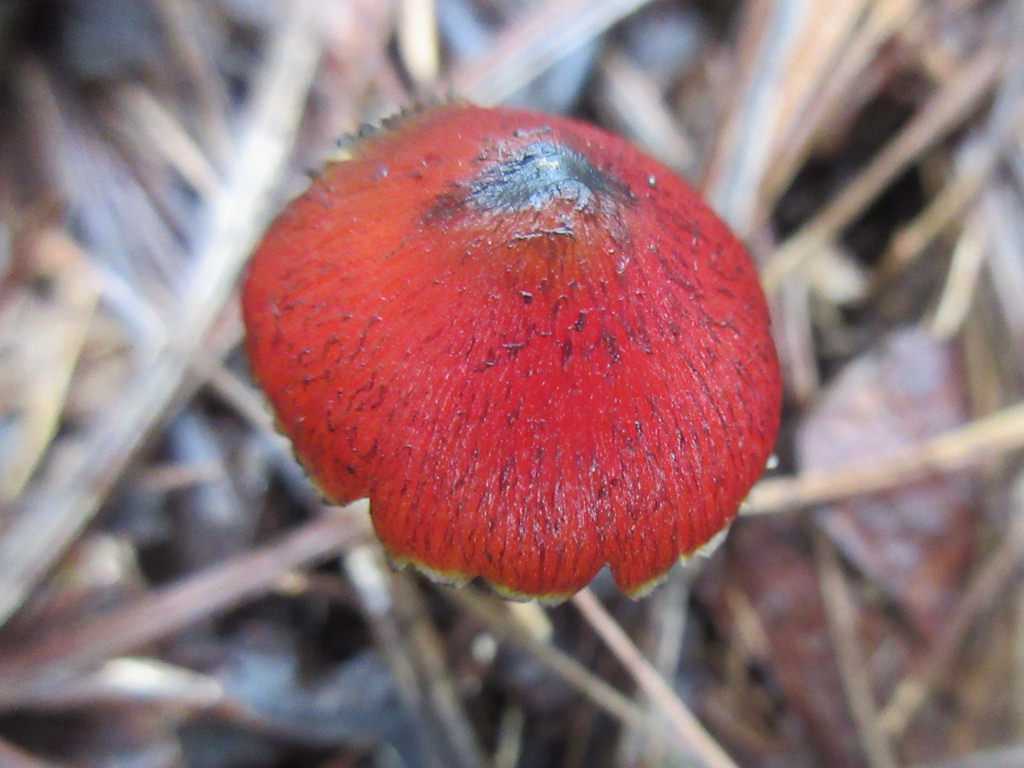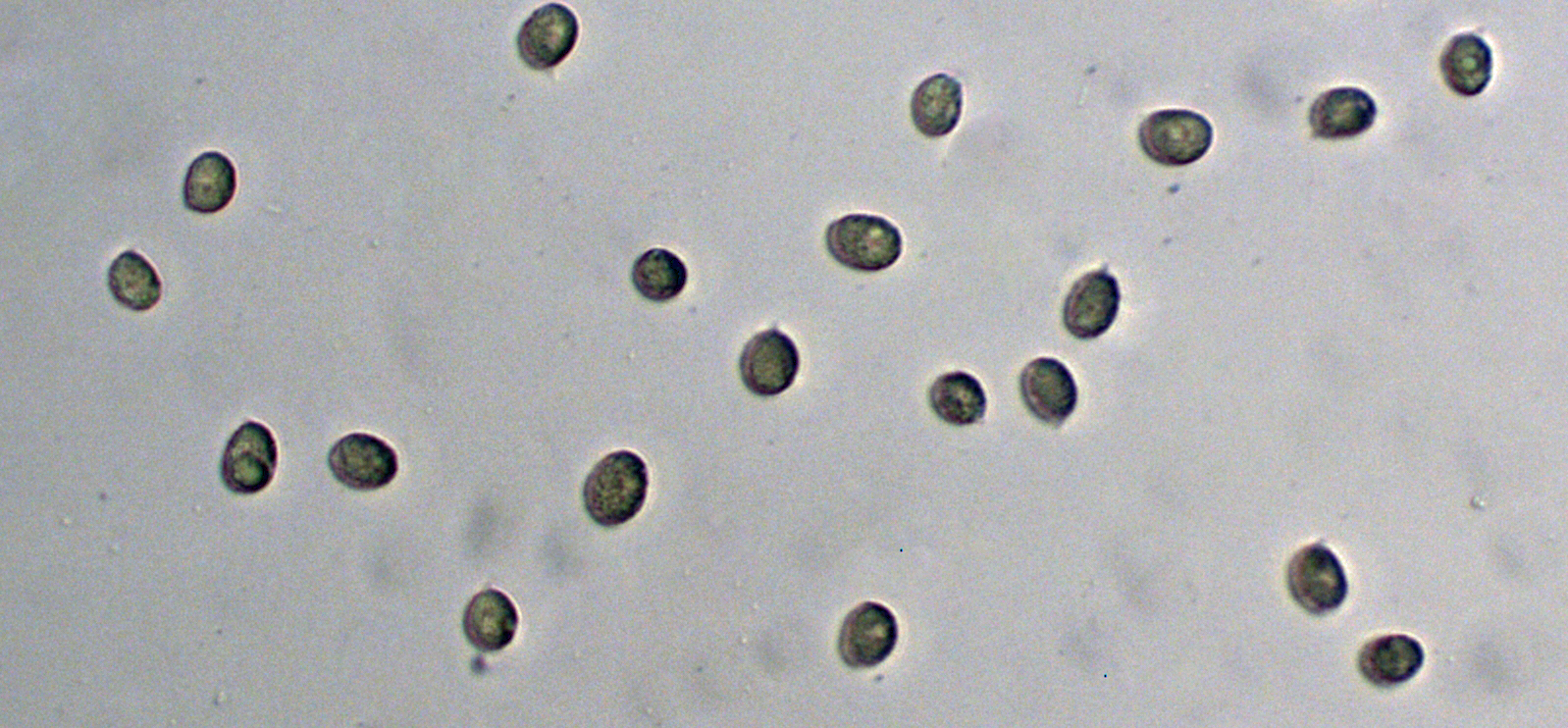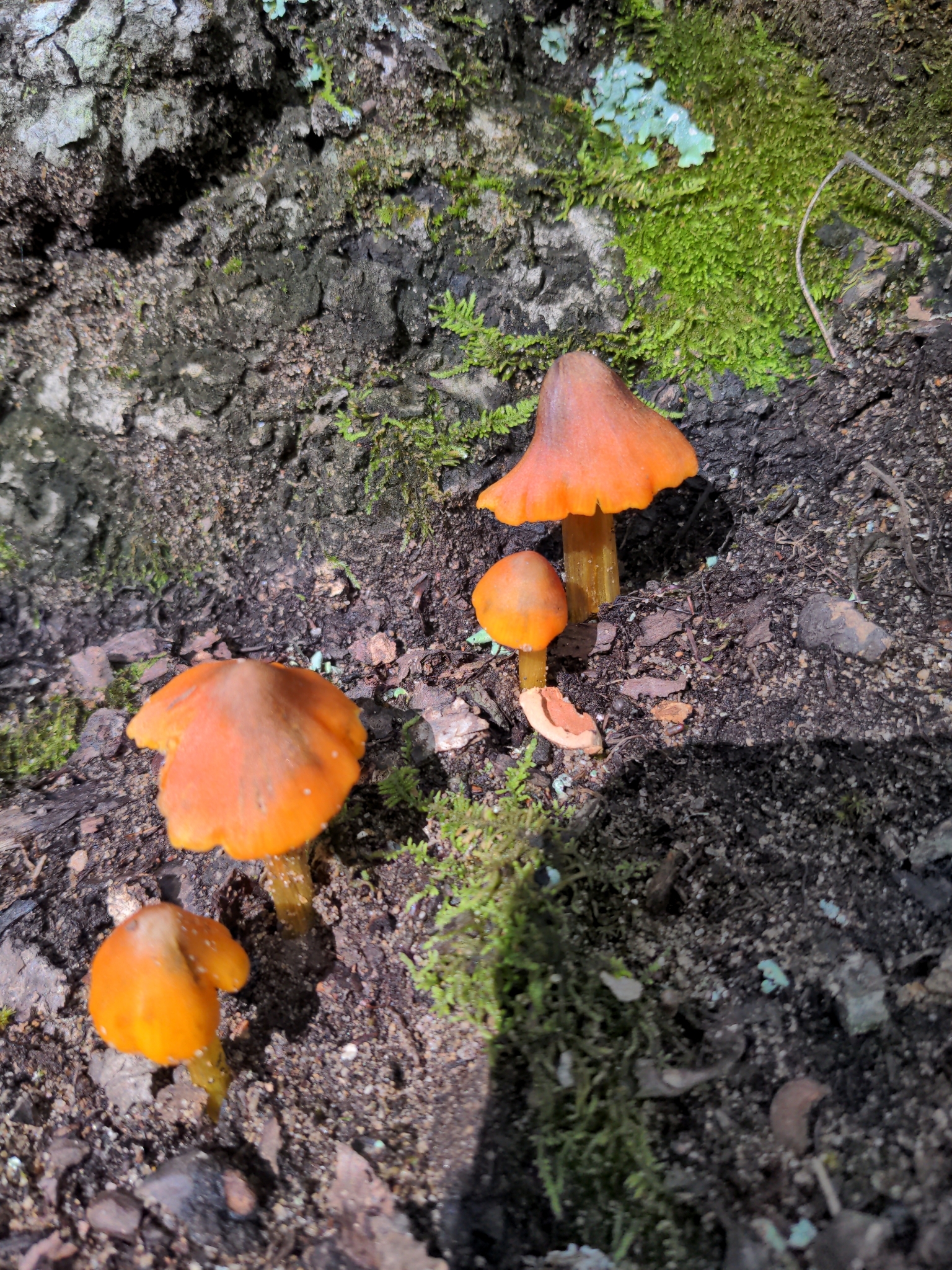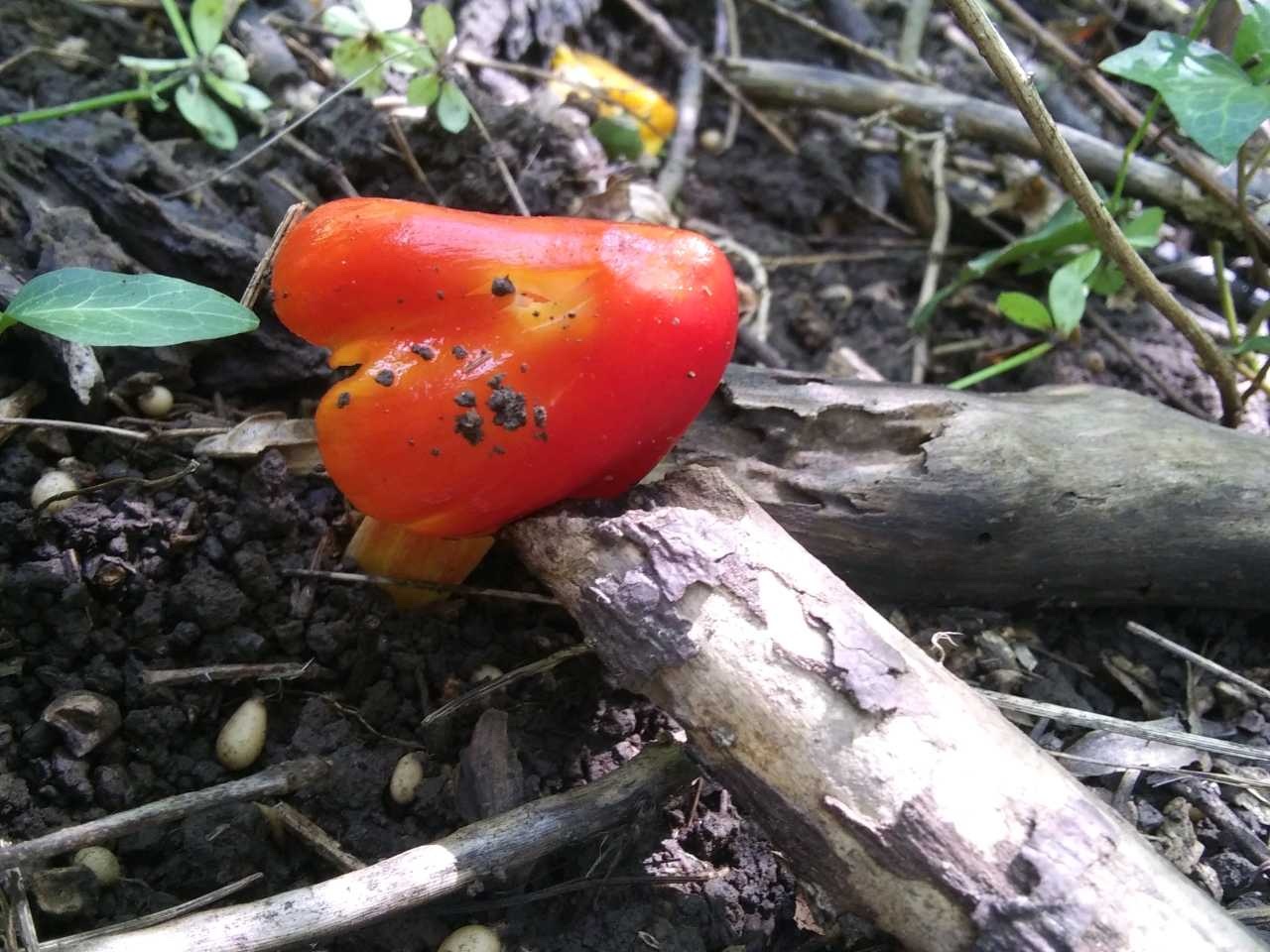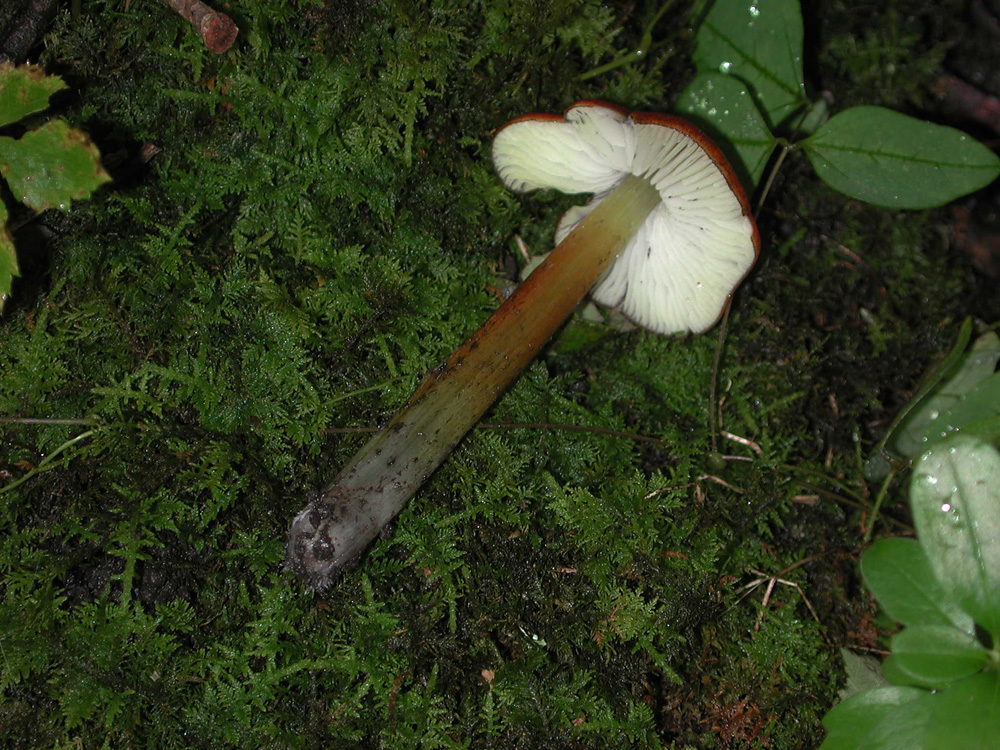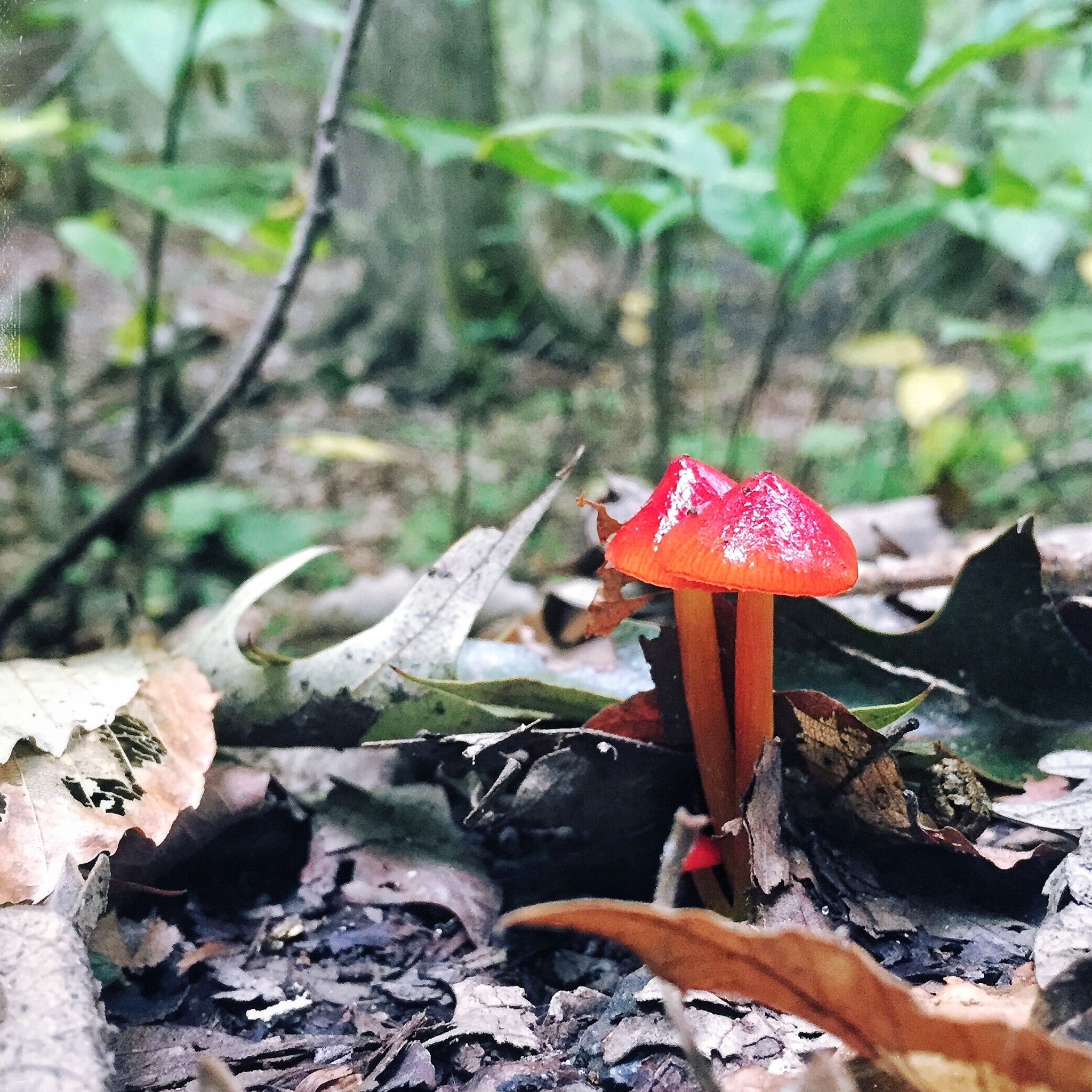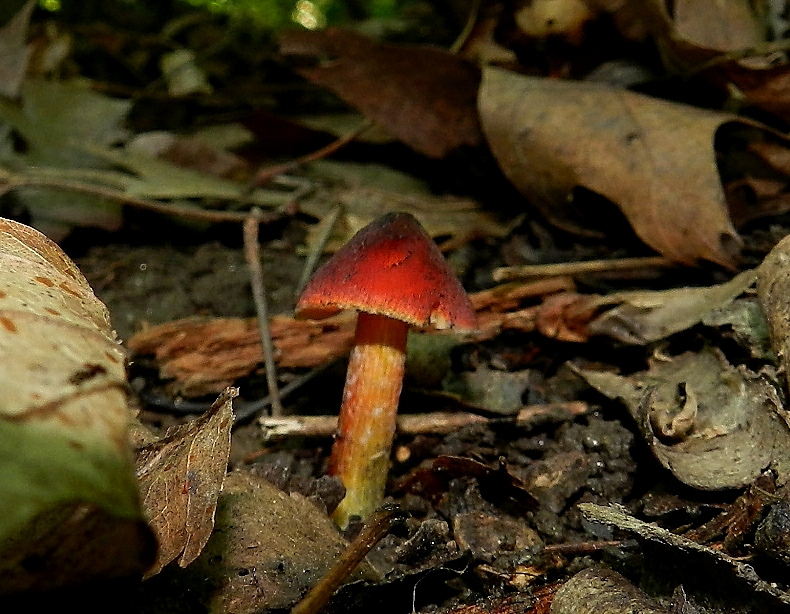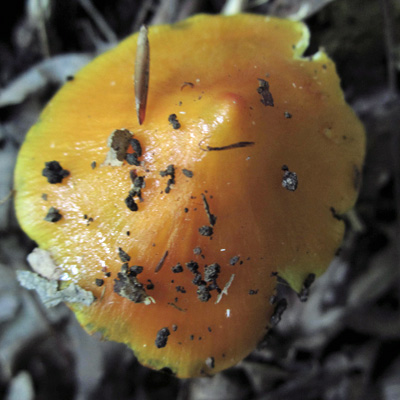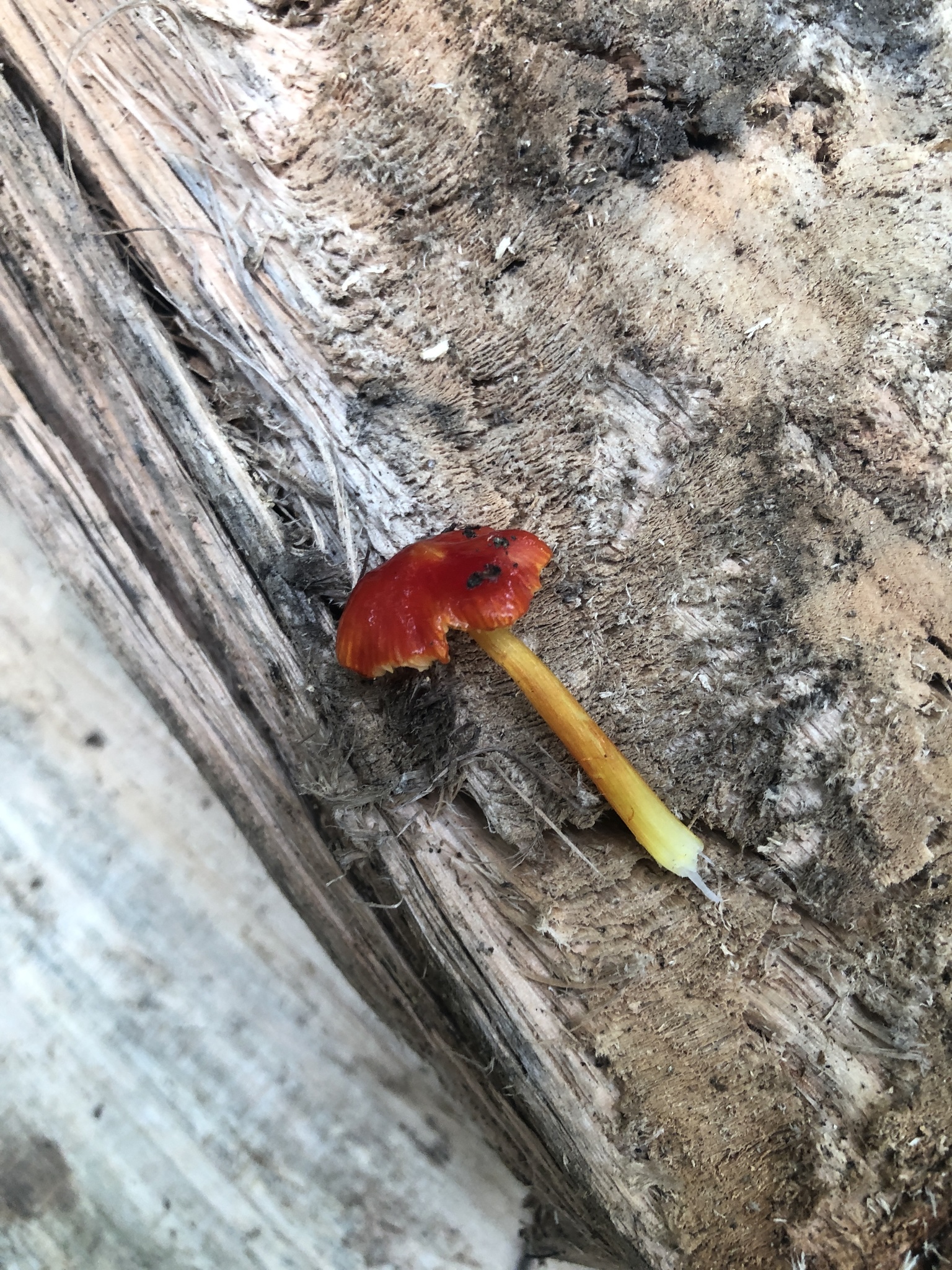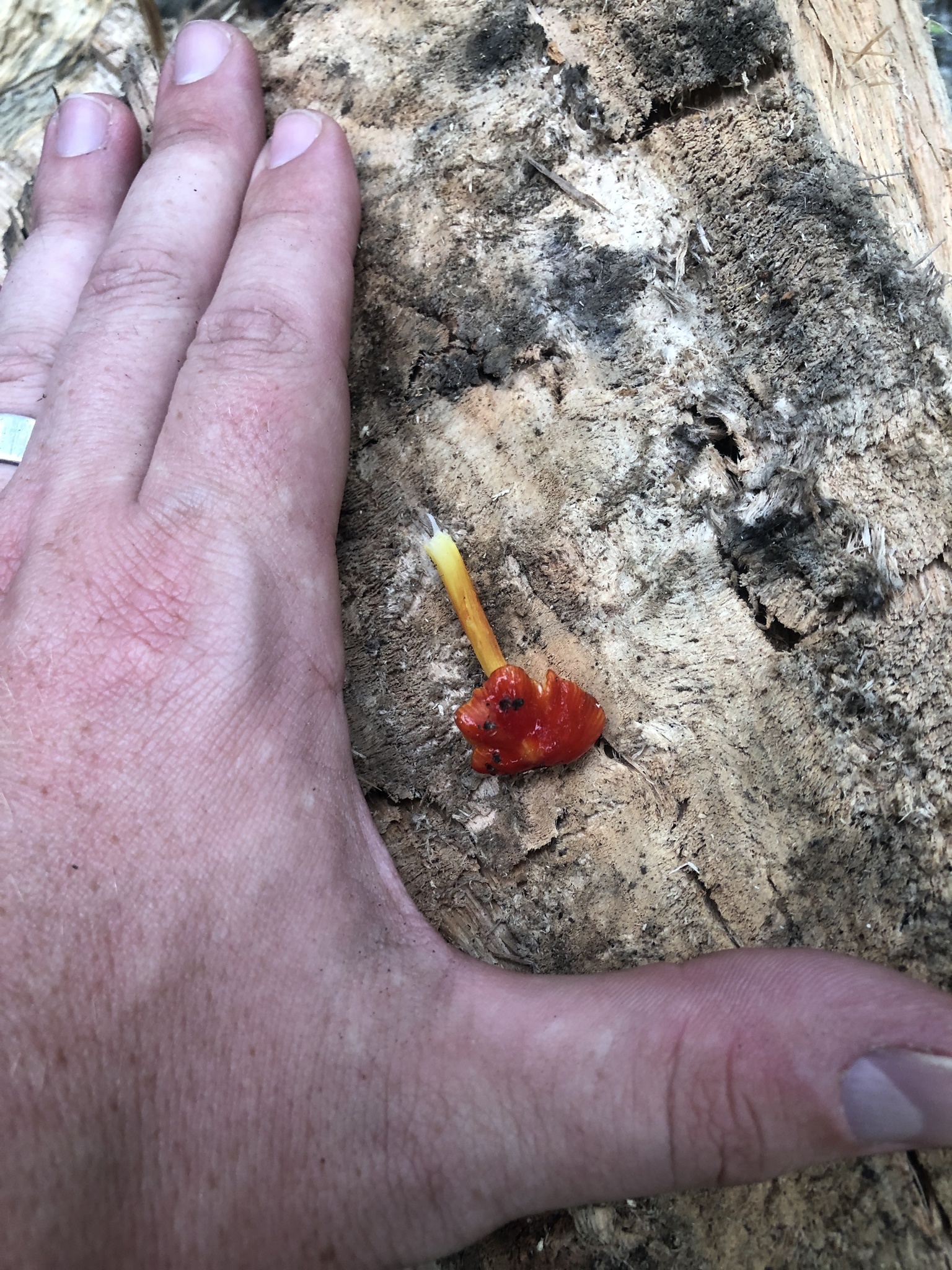Map Snapshot








41 Records
Status
Found scattered on the ground in coniferous or mixed forests.
Description
Shades of orange and red; staining black in age or when bruised; conical, often with point; may be sticky. Gills: White to yellow; waxy; bruise black. Stalk: Yellow to orange, bruises black. (J. Solem, pers. comm.)
Seasonality Snapshot
Source: Wikipedia
| Hygrocybe conica | |
|---|---|

| |
| Hygrocybe conica, Netherlands | |
| Scientific classification | |
| Domain: | Eukaryota |
| Kingdom: | Fungi |
| Division: | Basidiomycota |
| Class: | Agaricomycetes |
| Order: | Agaricales |
| Family: | Hygrophoraceae |
| Genus: | Hygrocybe |
| Species: | H. conica
|
| Binomial name | |
| Hygrocybe conica | |
| Synonyms | |
|
List
| |
| Hygrocybe conica | |
|---|---|
| Gills on hymenium | |
| Cap is conical | |
| Hymenium is emarginate | |
| Stipe is bare | |
| Spore print is white | |
| Edibility is unknown | |
Hygrocybe conica is a species of agaric (gilled mushroom) in the family Hygrophoraceae. In the UK it has been given the recommended English name of blackening waxcap,[1] since all parts of the basidiocarp (fruit body) blacken with age. In North America it is commonly known as the witch's hat, conical wax cap or conical slimy cap. Hygrocybe conica is known to be a complex of at least eleven closely related species[2] and as such is widespread in Europe, North America, Asia, and elsewhere.
Taxonomy
[edit]The species was first described from Bavaria in 1774 by German polymath Jacob Christian Schäffer, who named it Agaricus conicus.[3] Paul Kummer transferred it to the genus Hygrocybe in 1871.[4] Recent molecular research, based on cladistic analysis of DNA sequences, has confirmed that Hygrocybe conica belongs in Hygrocybe sensu stricto.[5] However, it has also indicated that the name is currently applied to at least eleven closely related but genetically distinct taxa worldwide.[2]
Description
[edit]Basidiocarps are agaricoid, up to 10 cm (4 in) tall, the cap narrowly conical at first becoming umbonate and often lobed, up to 10 cm across. The cap surface is smooth and finely fibrillose, moist or viscid at first, variously yellow to orange or scarlet. The lamellae (gills) are waxy, white to pale yellow or greyish. The stipe (stem) is smooth but fibrillose and streaky, yellow to orange-red, whitish towards base, lacking a ring. All parts become duller and grey with age, finally becoming entirely black. The spore print is white, the spores (under a microscope) smooth, inamyloid, ellipsoid, measuring about 8.5 to 11.5 by 5 to 7.5 μm.[6]
Distribution and habitat
[edit]Hygrocybe conica is widely distributed across North America, Europe, and Asia, as well as Australia and New Zealand, being found in summer and autumn. In Europe, it is typical of waxcap grasslands, a declining habitat due to changing agricultural practices. It is one of the commonest waxcaps, however, and is also found in dunes, road verges, and other habitats.[6] In North America it is often found in conifer woodland.[7] Though Hygrocybe conica occurs in Australia, principally near urban areas, many collections originally assigned to this species are the similar Hygrocybe astatogala.[8]
Edibility
[edit]The edibility of Hygrocybe conica is unknown and may be poisonous.[9][10][11]
References
[edit]- ^ Holden L. "English names for fungi". British Mycological Society. Retrieved 2022-07-31.
- ^ a b Cannon P. (2012). "Systematics, barcoding and ecology of fungi from waxcap grasslands in Britain" (PDF). Retrieved 2022-07-31.
- ^ Schaeffer, Julius C. (1774). Fungorum qui in Bavaria et Palatinatu circa Ratisbonam nascuntur Icones (in Latin). Vol. 4. Regensburg: Apud J.J. Palmium. p. 2.
- ^ Kummer P. (1871). Der Führer in die Pilzkunde (in German). Zerbst: C. Luppe. p. 111.
- ^ Lodge DJ; et al. (2014). "Molecular phylogeny, morphology, pigment chemistry and ecology in Hygrophoraceae (Agaricales)" (PDF). Fungal Diversity. 64 (1): 1–99. doi:10.1007/s13225-013-0259-0. S2CID 220615978.

- ^ a b Boertmann D. (2010). The genus Hygrocybe (2nd ed.). Copenhagen: Danish Mycological Society. p. 200. ISBN 978-87-983581-7-6.
- ^ Miller OK. (979). Mushrooms of North America. E.P. Dutton.
- ^ Young AM (2005). Fungi of Australia: Hygrophoraceae. Canberra, ACT: (Australian Biological Resources Study) CSIRO. ISBN 978-0-643-09195-5.
- ^ Miller Jr., Orson K.; Miller, Hope H. (2006). North American Mushrooms: A Field Guide to Edible and Inedible Fungi. Guilford, CN: FalconGuide. p. 62. ISBN 978-0-7627-3109-1.
- ^ Nilsson S, Persson O (1977). Fungi of Northern Europe 2: Gill-Fungi. New York, New York: Penguin. ISBN 978-0-14-063006-0.
- ^ Thiers, Harry D.; Arora, David (September 1980). "Mushrooms Demystified". Mycologia. 72 (5): 1054. doi:10.2307/3759750. ISSN 0027-5514. JSTOR 3759750.
